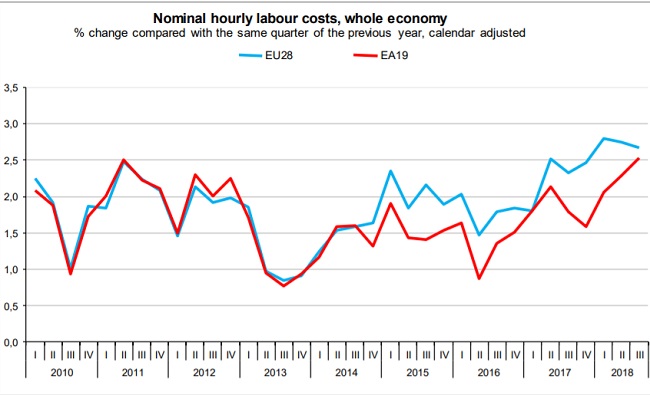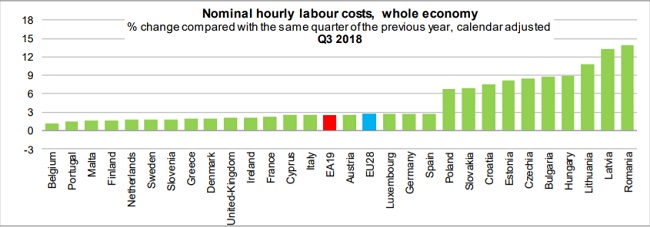Analytics, EU – Baltic States, Labour-market, Statistics
International Internet Magazine. Baltic States news & analytics
Friday, 26.04.2024, 22:40
Annual growth in labour costs at 2.5% in euro area
 Print version
Print versionThe two main components of labour costs are wages & salaries and non-wage costs. In the euro area, the cost of wages & salaries per hour worked grew by 2.4% and the non-wage component by 3.0% in the third quarter of 2018 compared with the same quarter of the previous year. In the second quarter of 2018, the annual changes were +2.1% and +3.0% respectively. In the EU28, the costs of hourly wages & salaries rose by 2.7% and the non-wage component rose by 2.4% in the third quarter of 2018. In the second quarter of 2018, annual changes were +2.8% and +2.7% respectively.

Breakdown by economic activity
In the third quarter of 2018 compared with the same quarter of the previous year, hourly labour costs in the euro area rose by 2.2% in industry, by 2.9% in construction and in services and by 2.1% in the (mainly) non-business economy. In the EU28, labour costs per hour grew by 2.6% in industry, by 3.3% in construction, by 2.8% in services and by 2.4% in the (mainly) non-business economy.
Member States
In the third quarter of 2018, the highest annual increases in hourly labour costs for the whole economy were registered in Romania (+13.9%), Latvia (+13.2%) and Lithuania (+10.7%), while the lowest annual increases in hourly labour costs were recorded in Belgium (+1.2%), Portugal (+1.5%), Malta and Finland (both at +1.6%).









 «The Baltic Course» Is Sold and Stays in Business!
«The Baltic Course» Is Sold and Stays in Business!

